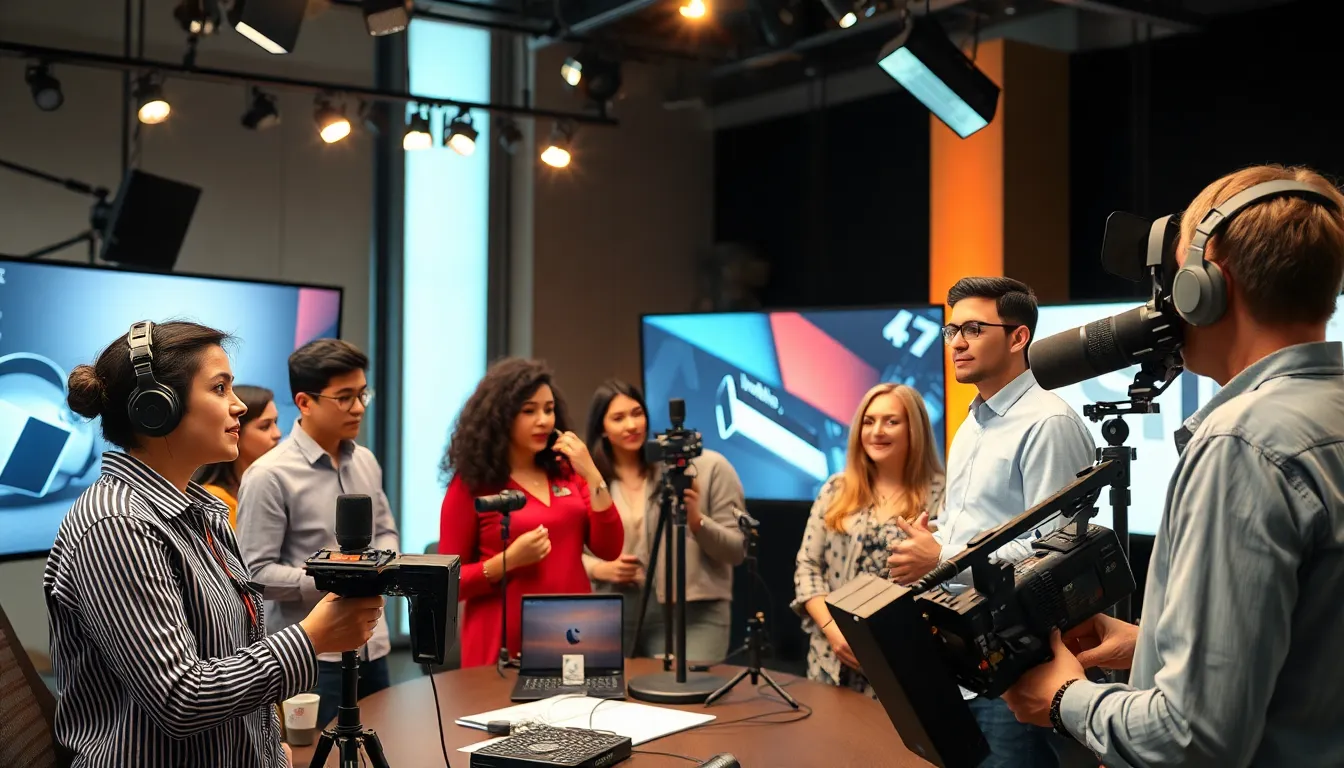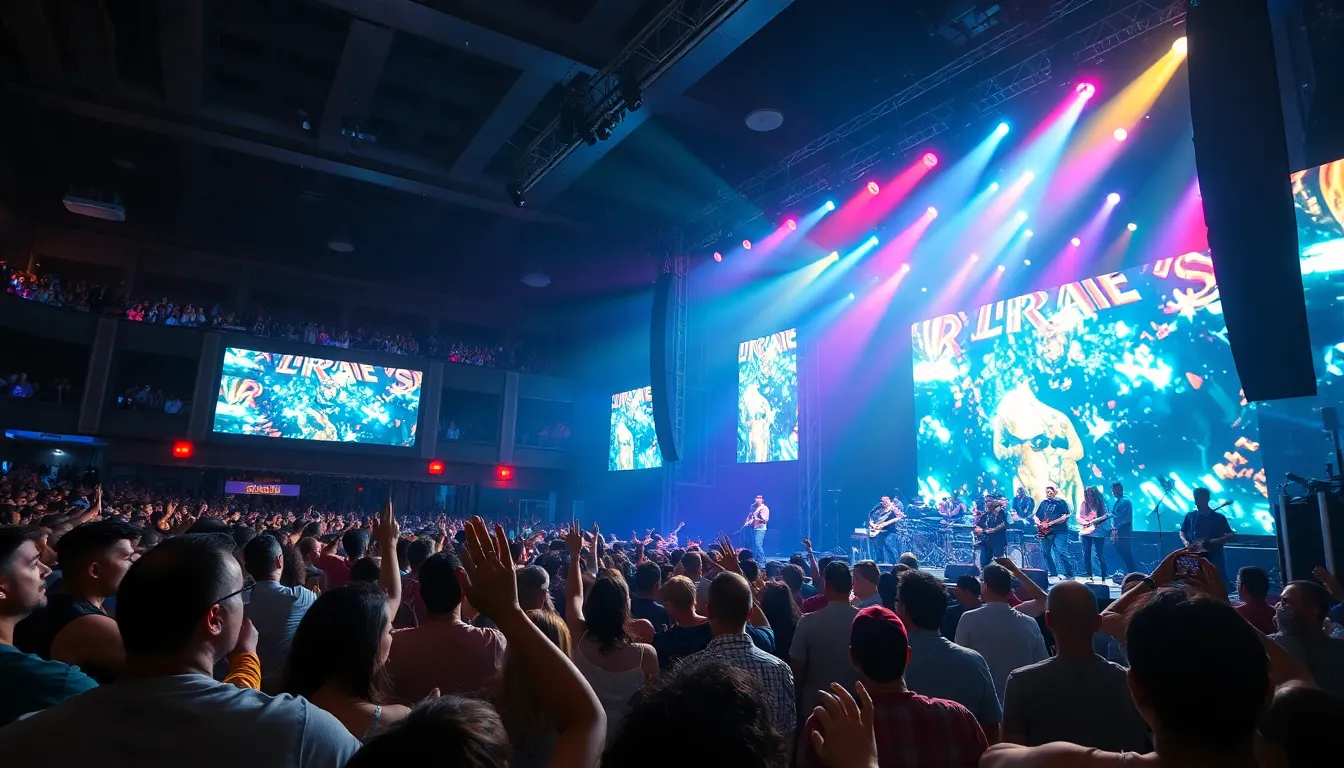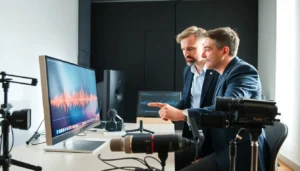In a world where every pixel and sound wave matters, audio and visual technology is the secret sauce behind unforgettable experiences. Whether it’s the heart-pounding bass of a concert or the stunning visuals of a blockbuster film, these technologies transform the ordinary into the extraordinary. Who wouldn’t want to feel like they’re front-row at their favorite band’s concert without leaving their couch?
Table of Contents
ToggleOverview of Audio and Visual Technology
Audio and visual technology encompasses a broad array of tools and systems designed to enhance sound and imagery. This technology includes devices like speakers, microphones, projectors, and cameras. Each tool plays a unique role in delivering engaging experiences.
Advancements in technology have led to significant improvements in sound quality and video clarity. High-definition audio formats, including Dolby Atmos, create immersive auditory experiences. HD and 4K resolution displays offer stunning visual clarity.
Integration of these technologies often occurs in various industries, including entertainment, education, and corporate settings. In concerts, sound systems amplify music, while visual displays add depth to performances. Similarly, classrooms utilize audio-visual tools to facilitate interactive learning.
Streaming services utilize both audio and visual technology to provide seamless experiences. Platforms like Netflix and Spotify enable users to enjoy high-quality content from their devices. Innovations in this field often lead to improved accessibility features, enhancing user engagement.
The convergence of audio and visual technology continues to shape experiences. Virtual reality and augmented reality represent the latest advancements, offering immersive environments. Enthusiasts engage with these experiences through headsets that combine sound and visuals effectively.
Professionals in various fields consistently seek to leverage these technologies. They understand the impact of high-quality audio and visuals on audience engagement. As audio and visual technology evolves, innovative applications emerge, further transforming how individuals consume and interact with content.
The Evolution of Audio and Visual Technology

Audio and visual technology has undergone significant changes over time, impacting how people experience events and media.
Historical Milestones
Early audio technology included phonographs and radios, which enabled sound transmission. The introduction of film in the early 20th century marked a pivotal moment, combined with synchronized sound to create talkies. Innovations like color broadcasting in the 1950s revolutionized television. The development of cassette tapes in the 1960s allowed portable music access, while the CD in the 1980s provided improved sound quality. Digital audio formats emerged in the 1990s, leading to the rise of MP3s, which transformed music consumption. Streaming platforms have since taken audio technology to new heights, facilitating instant access to vast libraries.
Recent Innovations
Recent advancements include immersive audio formats like Dolby Atmos, enhancing sound quality by providing a three-dimensional audio experience. High-definition video standards, such as 4K and 8K resolutions, deliver stunning visual clarity for consumers. Augmented and virtual reality technologies create interactive environments that redefine engagement. Artificial intelligence now personalizes content recommendations, enhancing user experience across platforms. Furthermore, live streaming technology has enabled seamless broadcasts for events, expanding accessibility. The convergence of audio and visual technologies continues to evolve, shaping the future of entertainment and communication.
Types of Audio and Visual Technology
Audio and visual technology includes various categories, each designed to enhance experience and communication.
Audio Technology
Audio technology encompasses devices such as speakers, microphones, and audio interfaces. Speakers deliver sound with varying quality, from portable Bluetooth options to immersive surround sound systems. Microphones capture sound, ranging from handheld models to professional-grade studio microphones. Innovations like Dolby Atmos provide immersive audio experiences, allowing users to feel sound from all directions. Audio interfaces connect instruments or microphones to computers, enabling precise sound manipulation. These technologies find use in various settings, including concerts and studios, connecting performers and audiences effectively.
Visual Technology
Visual technology includes equipment like projectors, cameras, and display screens. Projectors transform digital content into large images, suitable for presentations or cinematic experiences. Cameras capture high-resolution visuals, essential for filmmaking and photography. Display screens, from traditional televisions to cutting-edge 4K and 8K models, enhance viewing experiences with vibrant colors and clarity. Augmented and virtual reality technologies immerse users in entirely digital environments. These visual technologies are crucial in industries such as entertainment and education, engaging users through stunning imagery and interactivity.
Applications of Audio and Visual Technology
Audio and visual technology serves countless applications across various fields. This section explores its impact in entertainment, education, and communication.
In Entertainment
Audio and visual technology significantly transforms entertainment experiences. Concerts leverage high-quality sound systems and visual displays, enriching audience engagement. Films utilize advanced sound formats like Dolby Atmos, creating immersive environments that captivate viewers. Video games enhance gameplay through realistic audio effects and detailed visuals, fostering deeper connections between players and narratives. Streaming platforms employ cutting-edge technologies to deliver stunning visuals and crisp audio, ensuring high-quality viewing experiences. Events often incorporate live streaming, making performances accessible to global audiences. This seamless integration shapes how individuals experience and consume entertainment content.
In Education
In education, audio and visual technology enhances learning experiences. Classrooms use interactive whiteboards and projectors to facilitate engaging presentations. Educational videos allow students to grasp complex concepts through visual aids, fostering better comprehension. Virtual reality tools create immersive simulations, providing hands-on experiences in subjects such as science and history. Online learning platforms utilize audio and video technologies to deliver courses effectively across various formats. Students benefit from podcasts and webinars, which offer flexible, on-demand learning options. This technology supports differentiated instruction, catering to diverse learning styles and promoting academic success.
In Communication
Communication relies heavily on audio and visual technology to connect individuals. Video conferencing tools like Zoom enable remote collaboration, making it easier for teams to work together from different locations. Audio quality during calls impacts clarity and understanding, making high-definition sound essential for effective communication. Presentations often incorporate visual elements, ensuring messages resonate with audiences. Organizations utilize live streaming for events, expanding reach and allowing real-time interaction. Social media platforms leverage video content to engage users, facilitating dynamic conversations. This technology enhances storytelling and information sharing across personal and professional contexts, fostering a connected global community.
Future Trends in Audio and Visual Technology
Emerging technologies continue to shape audio and visual landscapes. Artificial intelligence will enhance audio recognition, improving accessibility for users. Virtual reality experiences evolve, providing more immersive environments in entertainment and education. Cloud-based solutions streamline audio and visual production, allowing real-time collaboration across distances.
In education, gamification grows, engaging learners with interactive elements and multimedia. High-resolution displays, including 8K televisions, deliver sharper visuals, enriching user experiences. Integration of haptic feedback in audio experiences fosters deeper connections, allowing users to feel sound. As demand for personalized content increases, algorithms become more sophisticated, suggesting tailored audio and visual content.
Collaboration tools now incorporate advanced audio visual elements, enhancing remote communication effectiveness. Partnerships between audio visual companies and tech startups drive innovation, introducing new products to the market. Equipment miniaturization leads to portable solutions, allowing users to access high-quality audio and visuals anywhere.
Additionally, sustainability remains a priority, with the development of eco-friendly materials for audio visual equipment. Furthermore, 5G networks enable faster transmission speeds, enhancing streaming quality and interactivity. Enhanced audio formats, like spatial audio, create immersive listening experiences, appealing to audiophiles.
As real-time polling becomes more popular during live events, audience engagement increases, transforming traditional presentations. The rise of interactive installations in museums and galleries showcases blending of art and technology, inviting users to explore creatively. Overall, the future of audio and visual technology points towards a more connected, immersive, and sustainable world.
Audio and visual technology continues to reshape how people experience the world around them. Its integration across various industries not only enhances entertainment but also revolutionizes education and communication. As innovations emerge the potential for more immersive experiences grows, paving the way for a future where creativity and technology converge seamlessly.
The ongoing advancements in audio formats and visual clarity promise to elevate user engagement to unprecedented levels. With a focus on sustainability and accessibility the industry is poised for a transformative journey. Embracing these technologies will undoubtedly lead to richer experiences and deeper connections in an increasingly digital landscape.







